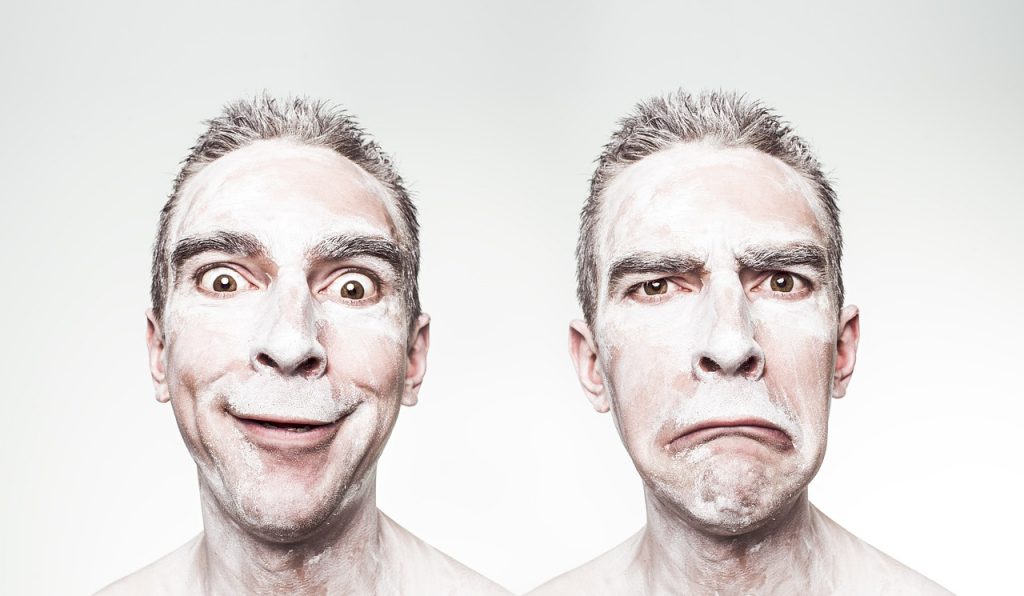
by Braden Kelley
Recently I had the opportunity to interview Mauro Porcini, author of the new book The Human Side of Innovation: The Power of People in Love with People.
Mauro Porcini is PepsiCo’s first ever Chief Design Officer. He joined the food & beverage corporation in 2012 and in said role he is infusing design thinking into PepsiCo’s culture and is leading a new approach to innovation by design that impacts the company’s product platforms and brands, which include Pepsi, Lay’s, Mountain Dew, Gatorade, Sodastream, Doritos, Lifewtr, Bubly, Aquafina, Cheetos, Quaker, 7Up, Mirinda, amongst many others. His focus extends from physical to virtual expressions of the brands, including product, packaging, events, advertising, fashion and art collaborations, retail activation, architecture, and digital media.
The interview dives into multiple aspects of innovation and design, including risk management, incremental versus disruptive innovation, the importance of language, meaning, and more.
Without further ado, here is the video recording:
Thanks to you Mauro for sharing your insights with our global human-centered change and innovation community!
To learn more about Mauro’s views on the importance of our humanity to design and innovation, grab yourself a copy of his new book The Human Side of Innovation: The Power of People in Love with People.

If you are more of a reader, then WITH FAIR WARNING, below you will find the questions I asked Mauro and a RAW TRANSCRIPT pulled directly out of YouTube without punctuation, etc. for the brave of heart.
I’m sorry, but it’s the best I can do right now. Here is the RAW, UNPUNCTUATED TRANSCRIPT of our interview:
1. Why is there no innovation without risk?
First of all thanks for having me it’s a pleasure to be here with you today why there is no innovation with our risk because the moment you change the status quo the moment you take anything it could be a product a brand
And experience a service anything and you modify uh its nature you modify that thing to take you to another status by definition you don’t know exactly uh what is going to happen you cannot control all the variables even just the fact that by modifying uh the solution people will react to it in a variety of different ways there is a wonderful um author and philosopher from Italy that inspired me since I was a child his name
Is pirandel and he wrote a book that in Italian was called Uno nesuno centonida I do remember exactly how they translated the title in English is available in many different languages but literally it means one nobody one hundred thousand and it talks about how we are one person but then eventually we are seen by the people surrounding Us in so many
Different ways and so we are 100 000 different people for all the people looking at us and interacting with us and seeing something different in us and then it goes on saying well because of this you know if you’re not yourself anymore and you are all those hundreds of thousands of interpretation uh you become nobody now we don’t need to think about this third iteration and this idea of nobody but that inspired me since I was very young because this is true for
Us as people but this is true also for anything we do as designers innovators entrepreneurs brand leaders we create something but we have no idea how that something is going to be interpreted by the people out there how they’re gonna use it they could spin it in One Direction in the other direction and so by definition when we create something we need to try to understand as much as possible the people in front of us their needs their wants their dreams and then
We need to really Buffet we need to do a proposal Ernesto juice Monday the founder of the lighting company are telling me that is Iconic you know premium luxury lighting firm used to say I don’t create solutions for people I create proposals and we’ll see how they will go obviously you know I try to manage the risk of The Proposal I try to control all the variables but we need to understand that we are Innovative and we’re really innovating we are need to
Be ready to take risk and we need to manage the risk with all the tools that we can with data we research with our knowledge but at the end of the day we need to be ready to take the risk and we also need to be ready therefore to manage the risk I used to work in 3M and the famous iconic CEO of 3M for many many years William McKnight used to say that once again there is not Innovation with our risk he was saying essentially the same thing and therefore we need to
Manage risk in the culture of the common we need to be okay with missteps with mistakes with failures or as I like to call them with experiments we need to be ready to embed the idea of failure slash experiment in our financial algorithms and we need to make sure that if somebody make an experiment that doesn’t go in the right direction by the way an experiment that by definition is all about testing and ideas so in any direction it goes is probably the right
Direction but you understand what I’m talking about when somebody makes an experiment proceed eventually by people as a failure or a mistake we don’t crucify the person we actually celebrate eventually the learning coming out of the misstep and we need to put in place also and ecosystem our processes and tools to extract as much learning out of that misstep and share the learn with the rest of the organization
Yeah I think I think it’s very important that that last Point especially that you just made around learning is the the key thing that you’re trying to achieve with any experiment and you can learn uh from success and failure and you know most of the time we we focus on trying to eliminate risk but I think you’re right that it’s key to not only manage it but manage the acceptance of the risk so so building upon that
2. You say innovation should start from our personal lives, but we also frequently say in design thinking that ‘you are not the customer’. How do you reconcile the two?
I love this question and nobody asked me this question yet I love it for a reason in the American culture of design that is the cultural design that essentially took to fame the idea of this I think you know and celebrated the idea of the same thinking I think there is somehow
And misunderstanding about what design thinking really is because we’ve been celebrating so much the processes the tools the ways of working uh that we think that is enough to bring in a consultant do a workshop on this and thinking all of a sudden now everybody knows the methodology we can do design think we can solve the problems of the world with that we think that we can bring in a design leader in these organizations and somehow
Introduce the idea of the same thinking and once again we’ll solve everything and the reality is that design thinking is not just a tool it’s not just about the tool eventually if you want to identify the same thinking as a methodology it’s not just about that there is the design thinker behind that and so there is all this conversations about the fact that you need to somehow detach yourself from uh the product the brand experience you
Need to focus everything on your end user or your customer or your consumer on the people you serve I like to call them people human beings and and so a lot of people think that you need to remove the sensitivity of the design The Poetry of the design the ability of the designer to understand those insights to observe people and translate that into poetry
Translate that into something that is unique that is different you know you can observe a reality in a neutral way as much as you want but at the end of the day if you put 20 people observing the same reality in the same way these 20 people we create solutions that are 20 times different on the base of their sensitivity and this is great we need to say that we need to preserve that is so important to understand that the touch of the design
Interpretation of the designer you know how the designer translates something that is objective that is neutral that is read about understanding the people you have in front of you but then add color nuances poetry as I called it earlier to make it magic to make it unique and this is the reason why you cannot replace designers with artificial intelligence at least until artificial intelligence
Will be able to replace human beings but then you know replacing designers or innovators will be the last of the problems or Humanity because artificial intelligence will think that you don’t need Humanity at all because we are totally in efficient in this plan I think we are destroying you know our society and our planet but before we get there hopefully we will never get there this sensitivity of the person the human being is something
We want to save and we need to stop talking about design thinking and Innovation processes as processes that need to be just objective and neutral without realizing the importance of having human beings with their emotions and their interpretations in these processes this is so clear when you are in a startup when you are a star designer to design a chair or a piece of light they make the difference as the
Entrepreneur make the difference in a subtop and then we work in corporations we work a scale and we forget the importance of the human being with a unique approach and sensitivity that can transform a cold data an observation that is available to anybody out there in Magic The Magic that make your company grow the magic that add shoulder value to your stock the magic the set you apart from competition yeah very very great points I think that
Too often people get lost in the idea of design thinking as a process when it’s more about a mindset and like you said the magic that that comes from identifying that key human insight and then doing something interesting with it
3. Why is incremental innovation no longer enough?
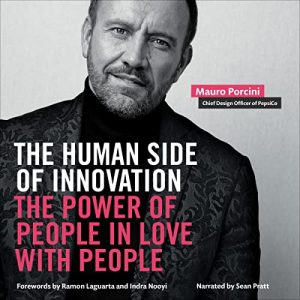 Incremental Innovation is safer and is a stable way to keep your company going to keep it up to speed and to progress towards something bigger and
Incremental Innovation is safer and is a stable way to keep your company going to keep it up to speed and to progress towards something bigger and
Better so we need that is not enough because we live in a world that is continuously disrupted by new things in the world of business that means that we have so many new companies new brands new products coming in in their business reality competing with our products and brands in our life it means that there are so many things changing all the time and we live in total uncertainty and therefore
The ability to change and to flex and eventually to these wraps is part of this new ecosystem we live in is becoming many situations for you know many people uh in many companies even a condition for survival you know if you’re a person you lose your job or you’re attacked by a virus or something happen imagine you’re like you need to be able to disrupt and and and and this is creating so much anxiety in this Society is so much an
Exciting in companies as well but let’s go back to you know the context of business in companies we live in a world where today anybody can come up with an idea get easy access to funding through their proliferation of investment funds and all platforms like kickstarter.com where you can crowdfund your idea the Custom Manufacturing is going down driven by globalization and new technologies you can go straight to the people you serve what I like to call
People and other person called consumers through the e-commerce platforms to sell them stuff and through social media to promote your ideas and products in all these areas the companies of the past were building their huge barriers to entry middle scale of production distribution and communication it was so difficult to go compete with a big brand with a big company for the man and the woman on the street today they can and so the big and the small are left with
Just one solution they need to focus on the needs and wants of people and create something extraordinary for them the way we are trying to do that at PepsiCo is to think of a future uh where you know understand what is the future understand the societal diffusion understand the freedom marriage category of the future and understand what kind of Road PepsiCo could play in in the future and then understand what kind of product portfolio we need
To have to be ready to the Future so already that thinking is somehow disruptive or generates idea that are disruptive then you need to figure out how to use them this kind of ideas inform our Innovation strategy in turn developing things in-house it informs our partnership and you venture strategy it informs our acquisition strategy so you need to find ways to be disruptive in a strategic way
To be ready to a war that is Shifting and changing in the speed of light and the normal cycle of innovation based on incremental linear innovation don’t work as well as they used to work because of the speed of change it doesn’t mean you need to develop everything from within it means that you need to develop an innovation strategy that then can find different kind of outputs you can do everything by
Yourself you can do it with Partners out there or you can eventually make Acquisitions as well if you are a company I can afford it and this is by the way interesting because in the startup kind of world we live in the acquisition strategy is what many of these are Tabs are looking for so it’s a health ecosystem where you have entrepreneurs eventually build up new things new ideas and you have corporations at a certain point are
Alive and work with them so is is a very interesting new scenario but both the beginners model need to understand how to combine incremental Innovation with more disruptive innovation and thinking definitely definitely and that that’s uh that’s a very important point that without companies seeking to acquire startups then fewer startups would it would exist because they wouldn’t see that as an exit um very cool so uh let’s go back to
Something that you spoke about there just recently there which is …
4. What is the harm in calling people consumers?
Look I studied design in school we would never call the people we designed for consumers it would be so weird and we’re calling them eventually users most of the time people human being we were talking already back then 30 years ago about human centricity but not as a nobody thing it was just the way we were doing things and so if you
Call People’s consumers you’re gonna face that you’re gonna focus on the idea of selling them stuff obviously I mean you look at them as entity buying your product and you want to make money on by the way on top of it you’re gonna categorize people and reduce people to the area of consuming but you know what me you my wife my daughter my friends we do so much more in life than just consuming you know we do so many more things and I
Don’t want companies and Brands to look at me as a consuming being I want to have companies and Brands looking at me as a human being for who I am if you call them users at least you’re gonna focus on the use of the product you’re offering them and so you’re gonna try to satisfy the needs that they have and create products that are functionally relevant and desirable but if you look at them as people as
Human beings you’re gonna go above and beyond you’re going to think about them holistically you’re gonna think about them as people you care about people you love you know the subtitle of the book is people in love with people and when you love somebody could be your kids your wife your husband your significant other your parents and your friends what do you do well you try to do more you try to really make these people happy to do
Magic and expect that you want to make sure that you are serving them at 360 degrees and this is you know the mindset and the culture you build in your company if you stop calling them consumers or even users I used to have to call them for who they are people human beings it changed completely words are powerful and and a word can help you shaping the culture of an organization call them people and you will have armies of other people in love with
People trying to create something extraordinary for them is the product is the brand is the service you’re not going to be happy just with something that is good enough because it’s profitable and people are buying it you’re gonna try always to create something that is extraordinary because you want first of all to make people happy now this was a luxury in the past eventually for companies today is a need and is a must because of the
Competitive landscape we live in with barriers to entry crumbling down under the Winds of globalization new technologies and digital media and therefore the need of this company is already creating something extraordinary in all the different dimensions because if you have one of few areas or weakness that in the past you could protect your barriers to entry today are exactly the entry point for your competitors to come and erode your market share your mind
Share your love share with your with the people you serve well I think I think those are all uh very important points that you have to bring it away from the ACT to consumption and back to the the whole person if you really want to connect with the people that you’re looking to to serve and to bring value and meaning to uh speaking of meaning what does it take my dog that is crying usually stays on the desk with me one of the two and now it’s not but it cannot come out by itself
5. What does it take to make a design meaningful?
Every time we create a product um or any solution in general somehow we are touching the life of these people in a variety of different
Ways and we can add um convenience safety Beauty style and a variety of other values to the life of these people or on the opposite direction we can make the life of these people and I’m we can create complications to their lives we can make it challenging and difficult therefore when we create something we should always be driven by this idea of creating something that is relevant to them
And relevant to the company you know I I and and so I Define this relevance through a series of principles of meaningful design that I talk about in the book there are two foundational principles that are one the idea of creating something that is functional that is emotional and is semiotic so it fulfilled a specific functional need it creates uh engagement and emotional level between you and the product in the
Quran and then somehow it represents you as a semiotic value it tells a story about you to the rest of the world and then the other foundational principle is that the the solution should be essentially and I synthetizing in a way you know but new unique different uh from anything out there then there are a series of other principles that somehow take you the level down and give you a direction on how to design these products the product should be
Sustainable from aesthetic standpoint from a functional standpoint from an equal ecological standpoint from a social standpoint respectful of people um from a emotional stem points from a financial statement there are a series of um values and I call it sustainable meaning that you need to think about your portfolio of products and Solutions in time it needs to be it needs to add all these different layers of value over
Time uh it’s not just about fulfilling a solution I need in the short term but really thinking about how the solution is sustainable over time and now you need to be ready to change over time to create something extraordinary for them Then There are a series of other clarifying principles but I invite you to have a look at the book it will be a longer story but he told you know those principles are really about the sensitivity of the designer and some of
The things we discussed earlier in this conversation uh about the fact that design is not just about the cold solution to a problem to a product but it’s a story that is the sensitivity of of uh the the the designer or the entrepreneur or anybody coming up with a lady and creating the solution behind that very good that that story is definitely challenging to create I’m sure
6. Why do we work so hard as human beings to get the right answers to the wrong questions? How can we do better?
Well often we live our lives personal lives as well as our professional lives answering to expectations that come from order and so here you are and they tell you
Well you need to do this and to do that you need to you know have certain steps in your life and you’re like okay this is what they’re asking me to do I comply I go to high school I go to university I get married eventually I do certain things that Society expect me to do you go to a job and they tell you this is your job description I hire you because of this and then later on they tell you well this is your project this is the brief
And what most of the people do is answering the brief working within the boundaries of the job description living within the boundaries of those expectations of society there are some people though and usually this is the mindset of the innovator the challenge the convention the challenge the question the challenge the brief not for the sake of challenging but just because they want to understand better they want to understand if what
They ask to do is the right thing to do for them but also for the people asking the people being your boss the company or even Society do we live in the right Society should we challenge the conventions of this Society is my job description great for my company or I could do more than that to really help the company in ways that the company doesn’t even realize is the question in the brief the right one
Or actually they should ask me something else because if I just answer the question I’m gonna generate a series of answers that are great that are right but the question is wrong and therefore by definition also those right answers will be wrong won’t have value as an example is an example I make in the book as well imagine they ask you to design a bridge and many people would be like okay they asked me to design a bridge so I’m going
To design a bridge and I’m going to design a bridge to these beautiful that is functionally unbelievable and and I I’m gonna generate you know a series of bridges and they will be incredible designers and Engineers that we generate beautiful and super functional bridges that we all admire and they’re very iconic but the real innovator and by the way the philosopher the child will ask why
Here I am with another dog just a second she’s well uh the real innovator as well as the philosopher and a child they all ask why is typical of the philosopher to ask why and then again why again why is a technique to arrive to their root cause to the primary cause of everything the children do the same for other reasons and so once when you start to apply you will figure out in the case of the bridge that first of all
Yes you need to move from A to B why do I need a bridge of course you need to move from one side of the river to the other side of the river but then you ask again why why do I need to move on the other side of the river and they will tell you what because in the other side of the river there is the hospital and therefore the people of this town they need to take a bridge to arrive in a convenient way to the hospital if you stop there
Immediately you will think well maybe the bridge is the solution but maybe I can invent something else maybe I’m going to invent a sort of drone that you can write that can make each person real time super quick much faster than taking a car and going on a bridge arriving to the other side of the river so already that is an innovation instead of Designing a bridge you’re designing a machine that can fly it can take you to the hospital
But if you keep asking why maybe you arrive to realize that actually you don’t need the hospital on the other side you know the hospital is there but you can build an Hospital on this side of the river and so instead of Designing yet another Bridge you’re gonna design an hospital that is by far better Solutions because these people can have right much faster to the hospital when they did it than taking a bridge and going to the other side of the river
This is a very banal example very simplistic example to show how often we keep creating solutions for problems that are not the right ones to solve and if we will question the challenge the brief who arrive to something very different I did this all my life because of a man that with these behaviors and the way he was conducting business somehow taught me the kind of mindset it was my partner in the agency I created many years ago his name is Claudio a
Famous shoe business producer imagine like meeting Jay-Z here in the United States when you’re 24 and creating a company with this person so that’s what happened to me and I learned by observing him how he would challenge everything and every time thinking how can I do something different from uh what I did you know even himself before or from what everybody else did before and he was using this technique of always trying to understand the root
Causes and how you could really create something relevant for people in a different way and so with that kind of mindset I joined 3M I joined PepsiCo and I started with challenging my own job description creating something different in the way I was interpreting my job they were asking me to design products mostly the aesthetic side of a product a 3M I created the chief design officer position over time doing much more than what they were asking me and I thought
I’d be in so much more value for the company than if I was just designing the style of those two products they asked me to design when I was 27.
Image credits: Pixabay, Mauro Porcini
![]() Sign up here to get Human-Centered Change & Innovation Weekly delivered to your inbox every week.
Sign up here to get Human-Centered Change & Innovation Weekly delivered to your inbox every week.

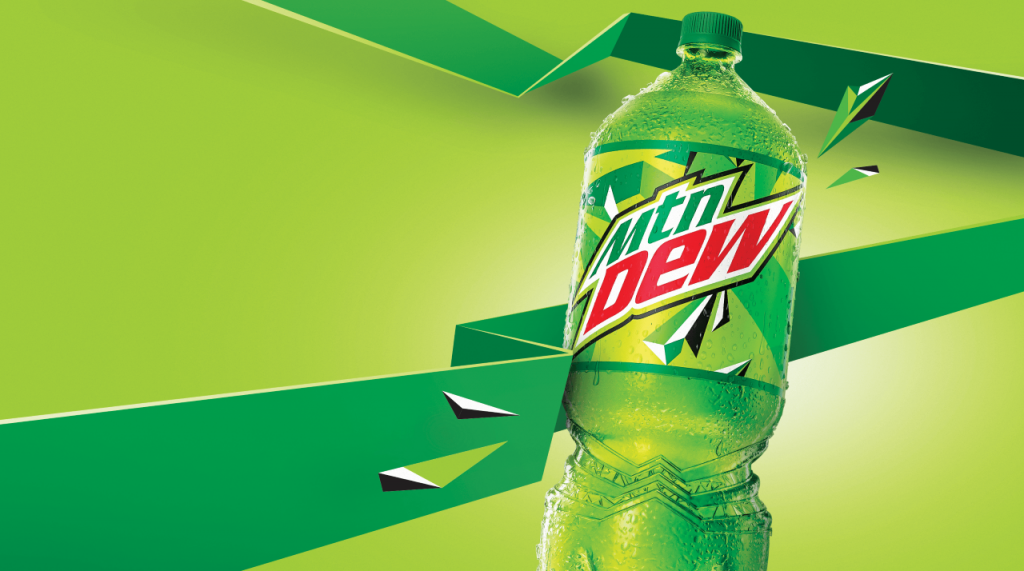
 The reality is that design and innovation are one and the same. Innovation is all about people. Innovation is about imagining, designing and developing meaningful solutions for people’s needs and wants. As designers, we are trained in three dimensions: human science (desirability), business (viability) and technology (feasibility). In the projects my global design team works on at PepsiCo, we connect these three dimensions to create products, brands, experiences and services that are relevant to the communities we design for. We call this approach “design”; the world often calls it “innovation.”
The reality is that design and innovation are one and the same. Innovation is all about people. Innovation is about imagining, designing and developing meaningful solutions for people’s needs and wants. As designers, we are trained in three dimensions: human science (desirability), business (viability) and technology (feasibility). In the projects my global design team works on at PepsiCo, we connect these three dimensions to create products, brands, experiences and services that are relevant to the communities we design for. We call this approach “design”; the world often calls it “innovation.”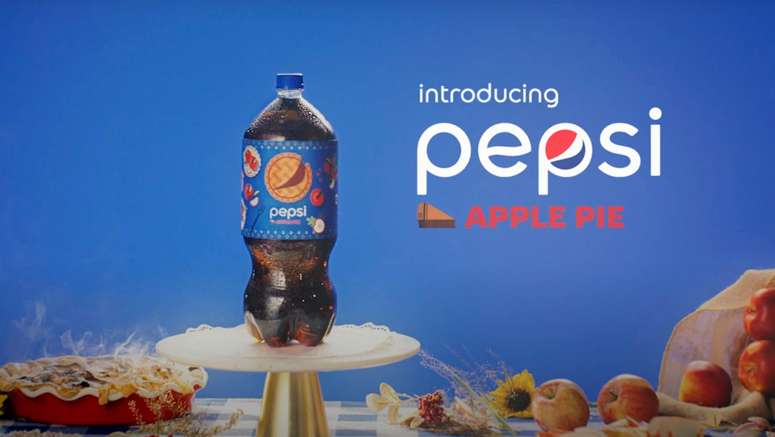
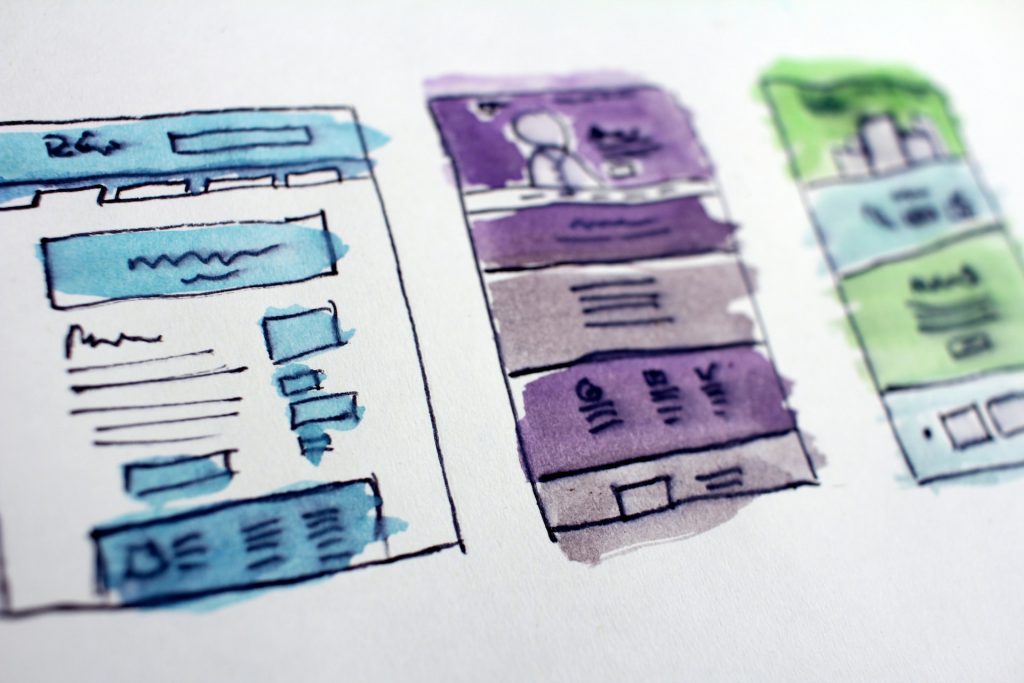
 Recently I came across an
Recently I came across an 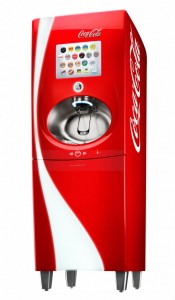 So what is going on here for Coca-Cola?
So what is going on here for Coca-Cola?